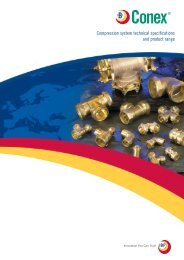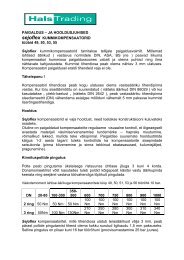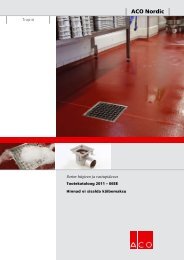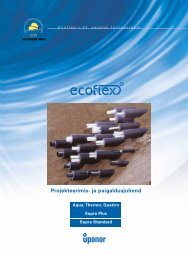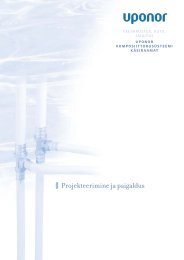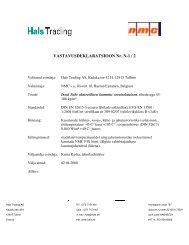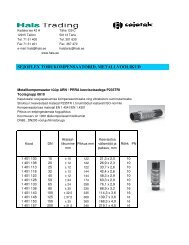Thermostatic heads and valve bodies
Thermostatic heads and valve bodies
Thermostatic heads and valve bodies
Create successful ePaper yourself
Turn your PDF publications into a flip-book with our unique Google optimized e-Paper software.
ThermostatIC HEADS<br />
Function<br />
In terms of controls, thermostatic <strong>heads</strong> are seen as continuous proportional controllers (P controllers) that require no auxilliary<br />
energy. They do not need an electrical connection or other source of energy. Changes in room air temperature are proportional<br />
to changes in the <strong>valve</strong> stroke.<br />
If the temperature of the air in the room increases due to sunshine, for example, the liquid in the temperature sensor exp<strong>and</strong>s<br />
<strong>and</strong> affects the corrugated pipe. This chokes the water supply to the radiator via the <strong>valve</strong> spindle. If the temperature in the<br />
room decreases, the opposite process occurs. The change in <strong>valve</strong> stroke caused by a change in temperature can be quantified<br />
as 0.22 mm per K room temperature change.<br />
Operation<br />
Recommended room temperatures<br />
The following temperature settings are recommended for the corresponding rooms based on heating with cost savings in<br />
mind: Setting position for thermostatic <strong>heads</strong> K, VK, <strong>and</strong> WK, for example:<br />
Setting/Position room temperature Recommended for e.g.<br />
approx.<br />
28° C Swimming pool*<br />
24° C Bathroom<br />
22° C Work room or children’s bedroom<br />
20° C Living or dining rooms (basic setting)<br />
18° C Küche, Korridor<br />
16° C Hobby room, bedroom<br />
14° C All rooms at night (nighttime reduction)<br />
12° C Stairway, vestibule<br />
6° C Basement/cellar rooms (frost protection setting)<br />
*) If higher temperatures are required for the swimming pool area, special thermostatic <strong>heads</strong><br />
are available (15 °C (59 °F) to 35 °C (95 °F) setting range).<br />
**) For thermostatic <strong>heads</strong> with an auxilliary zero position, the lowest setting is 0 °C (32 F).<br />
Setting the temperature<br />
The desired room temperature can be selected by turning the thermostatic head (right = cooler, left = warmer). The arrow<br />
must be pointing to the appropriate setting position (number, bar, symbol).<br />
All HEIMEIER thermostatic <strong>heads</strong> are adjusted in a climatic chamber, free of external influences such as heat build-up, sunshine,<br />
etc. The number 3 corresponds to a temperature of approximately 20 °C (68 °F). The difference between each number is approximately<br />
4 °C (7 °F) (thermostatic head B approx. 3 °C (5 °F), from bar to bar approx. 1 °C (2 °F). We recommend setting<br />
at the number 3 which corresponds to the basic setting of about 20 °C (68 °F) room temperature. Settings above 4 should be<br />
avoided if a lower setting satisfies the comfort level, as a 1 °C (2 °F) higher room temperature corresponds to an increase in<br />
energy use of around 6 %.<br />
The K thermostatic head is also available with a limited setting range (Article no. 6120-…500). The lowest setting at 1 corresponds<br />
to a temperature<br />
of about 6 °C (43 °F) <strong>and</strong> serves as the frost protection setting. The difference between this <strong>and</strong> the next number 2 is about<br />
2 °C (4 °F) <strong>and</strong> to the next number around 4 °C (7 °F). This means that the number 3 corresponds to a temperature of approximately<br />
12 °C (54 °F). The highest setting is configured in 1 °C (2 °F) steps between 15 °C (59 °F) <strong>and</strong> 25 °C (77 °F). his is<br />
achieved by turning the thermostatic head to the left, up until it stops.<br />
5





